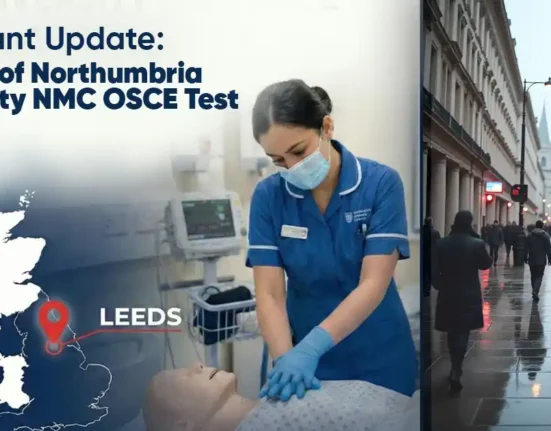Preparing for your NMC OSCE (Objective Structured Clinical Examination) can feel overwhelming, especially when you are unsure what to expect on exam day. While the core structure of the NMC OSCE skills remains consistent, there are a few differences and nuances that may catch you off guard.
here, we will walk you through those key differences in NMC OSCE and help you prepare confidently.
Table of Contents
What Stays the Same in NMC OSCE?
Before diving into the differences in NMC OSCE, let’s quickly revisit what remains constant:
- Structured Stations: Each station focuses on a specific clinical skill or scenario.
- Assessment Criteria: You will be evaluated on your communication, clinical technique, and decision-making skills, as outlined in the marking criteria.
- Timing and Rotation: Each candidate rotates between stations in a timed and structured manner.
Key Differences in NMC OSCE You May Encounter on Exam Day
Even though the overall format is consistent, here are some small but important differences to be aware of:
1. Patients vs. mannequin
Exam centres may use actors as patients, while others might use a mannequin. This may change how you approach history-taking or physical exams.
| Patients | Mannequin | |
| Communication & Interaction | Can verbally express symptoms, pain, concerns, and emotions.Allows for a natural conversation (e.g., “Can you describe your pain?”). | Cannot communicate; responses are given by the Examiner.You must verbalize your actions (e.g., “I am checking for signs of distress”). |
| Physical Examination | Can show visible signs like discomfort, facial expressions, or guarding of a painful area.Can Obtain Vital value by demonstrating technique.You must ask for consent before touching (e.g., “May I check your blood pressure?”). | Vital Values given by Examiner; Still demonstrate the technique.Consent must still be verbalized for examiners |
| Vital Signs Assessment | You must physically assess and state the value as per observation. (e.g., pulse, respiratory rate, BP, etc).Document obtained value accurately. | Vital signs are pre-set and indicated by the examiner.You must state aloud what you are observing (e.g., “The pulse rate is 88 bpm, which is within normal range”).Document provided value accurately on the chart. |
The assessment approach stays the same, but adapts your interaction based on whether it’s a real person or a mannequin.
2. Intramuscular Injection Station
Cyanocobalamin and Hydroxocobalamin are mostly given for Intramuscular Injection station. However, during the exam, you might be given a Streptomycin injection. It is an Antibiotic used for treating infections. The administration technique remains the same. Please ensure that you check the prescribed dose as indicated in the given prescription. Load and administer medication as per prescription.
The assessor might ask Candidates to use the thigh for Intramuscular injections. The injection procedure remains the same. On the manikin, you will see a rubber portion on the thigh where the injection should be administered.
3. Catheter specimen of urine station
During the Exam, you might get a separate clamp (non-traumatic clamp) instead of the attached one. Use and attach a separate clamp a few centimetres distal to the sampling port.
4. Oxygen Therapy Station
During the exam, you might be given a Reservoir Mask or Nasal Cannula, or Venturi mask. As per the prescription, select the device and flow rate during administration.
For more information, refer to Different types of Oxygen Masks in the NMC OSCE Oxygen therapy station blog.
- Practice under timed conditions – Ensure to practise each skill with a timer.
- Rehearse communication – Record each skill verbalisation and evaluate whether there is any error or not. Try to review it after each practice to ensure you meet all the critical criteria
- Stay updated with updates – The NMC sometimes updates exam requirements. Follow their website and trusted OSCE preparation platforms to stay updated.
- Rest well before the exam – proper rest will help you to perform better under pressure.
Your OSCE is a test of real-world clinical performance, not just textbook knowledge. By understanding the structure and preparing for the subtle differences that may arise on the NMC OSCE exam day, you can walk in with clarity and confidence.
Mentor Merlin ensures that even the smallest changes in the marking criteria or the NMC OSCE exam are carefully incorporated into our training. We are committed to keeping our students fully updated and thoroughly prepared for their exams.
NMC OSCE For nurses Everything You Need to Know in 2025 👉 Click Here
For Any NMC OSCE Related Queries and Training Chat with Us!











